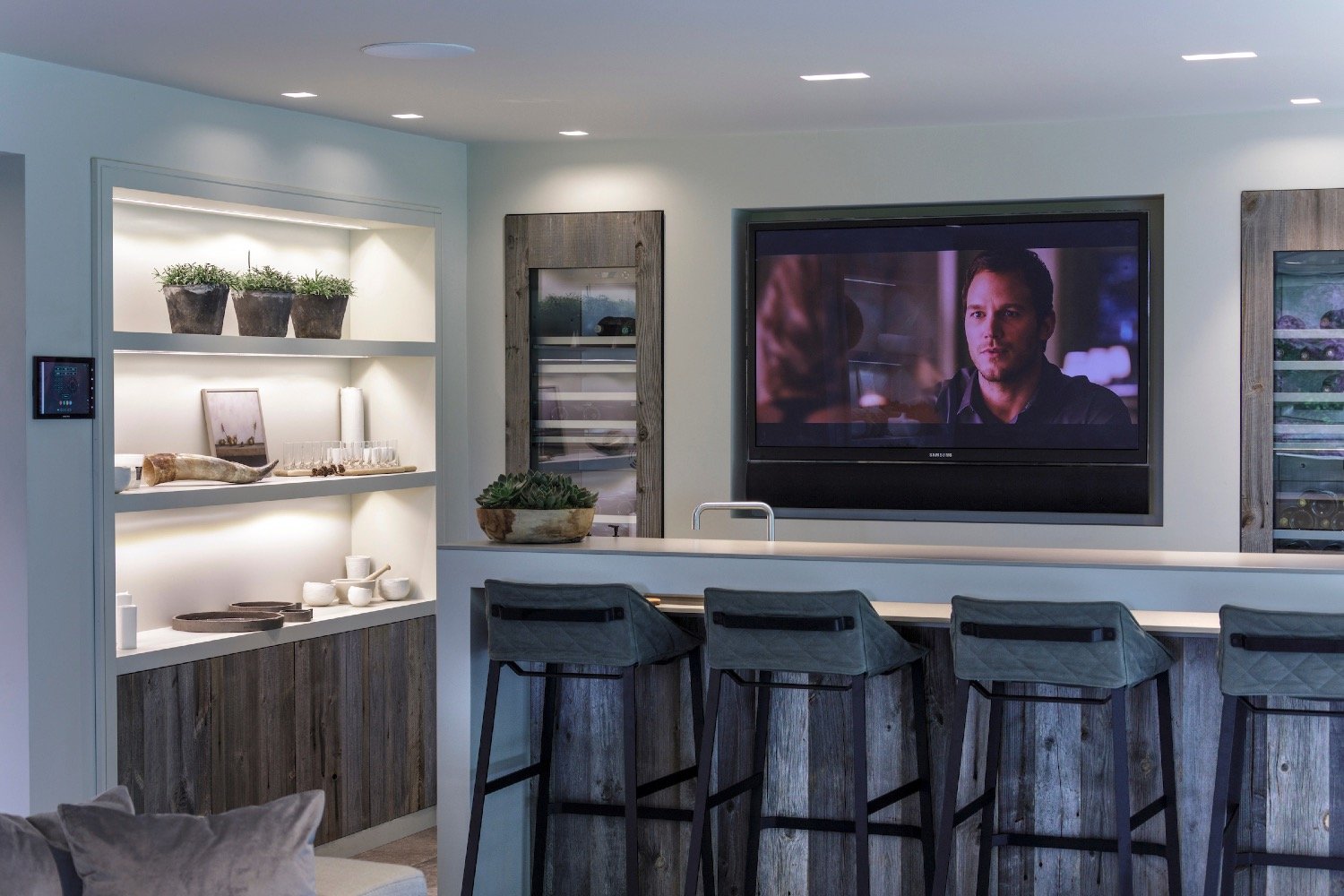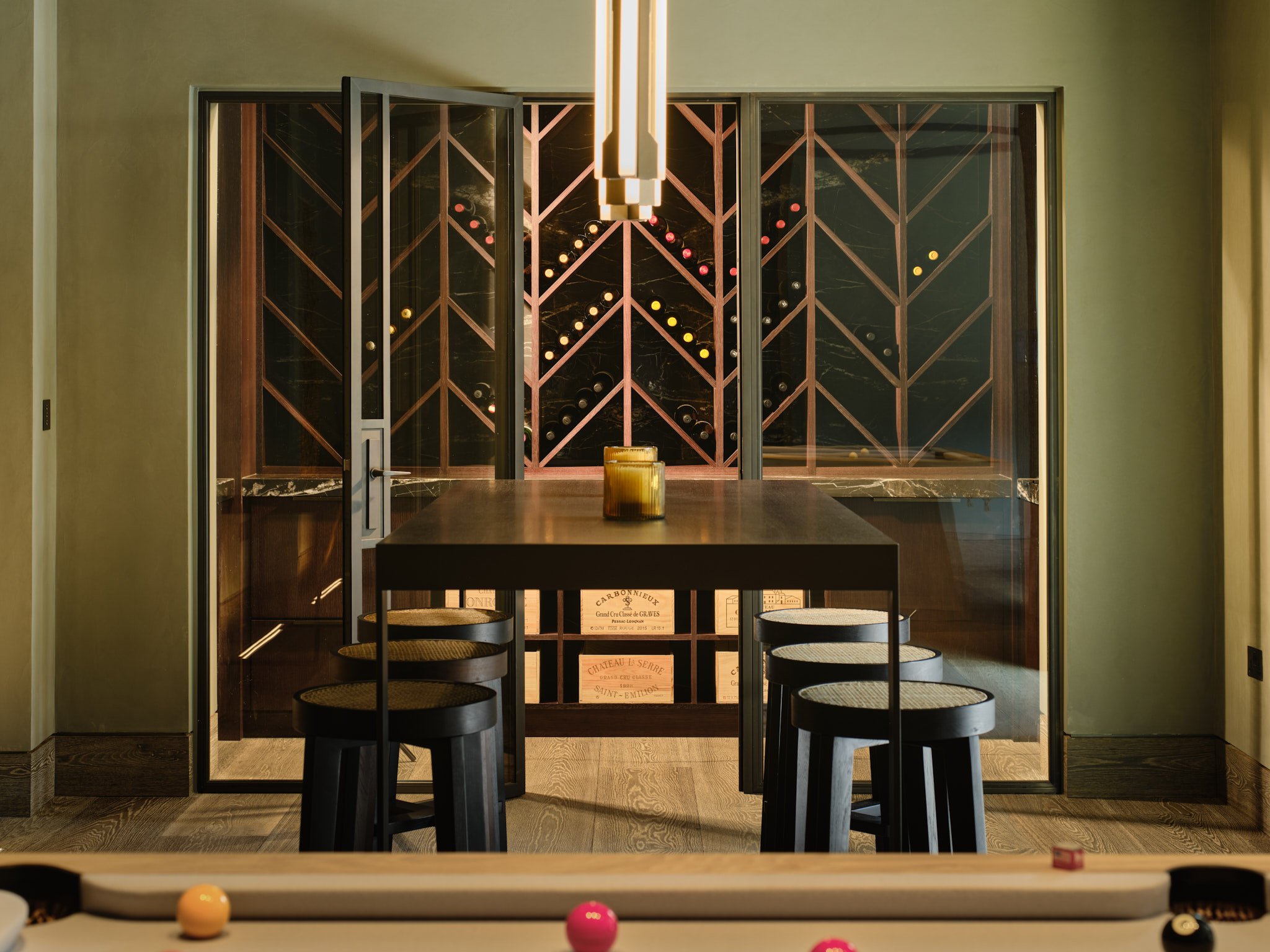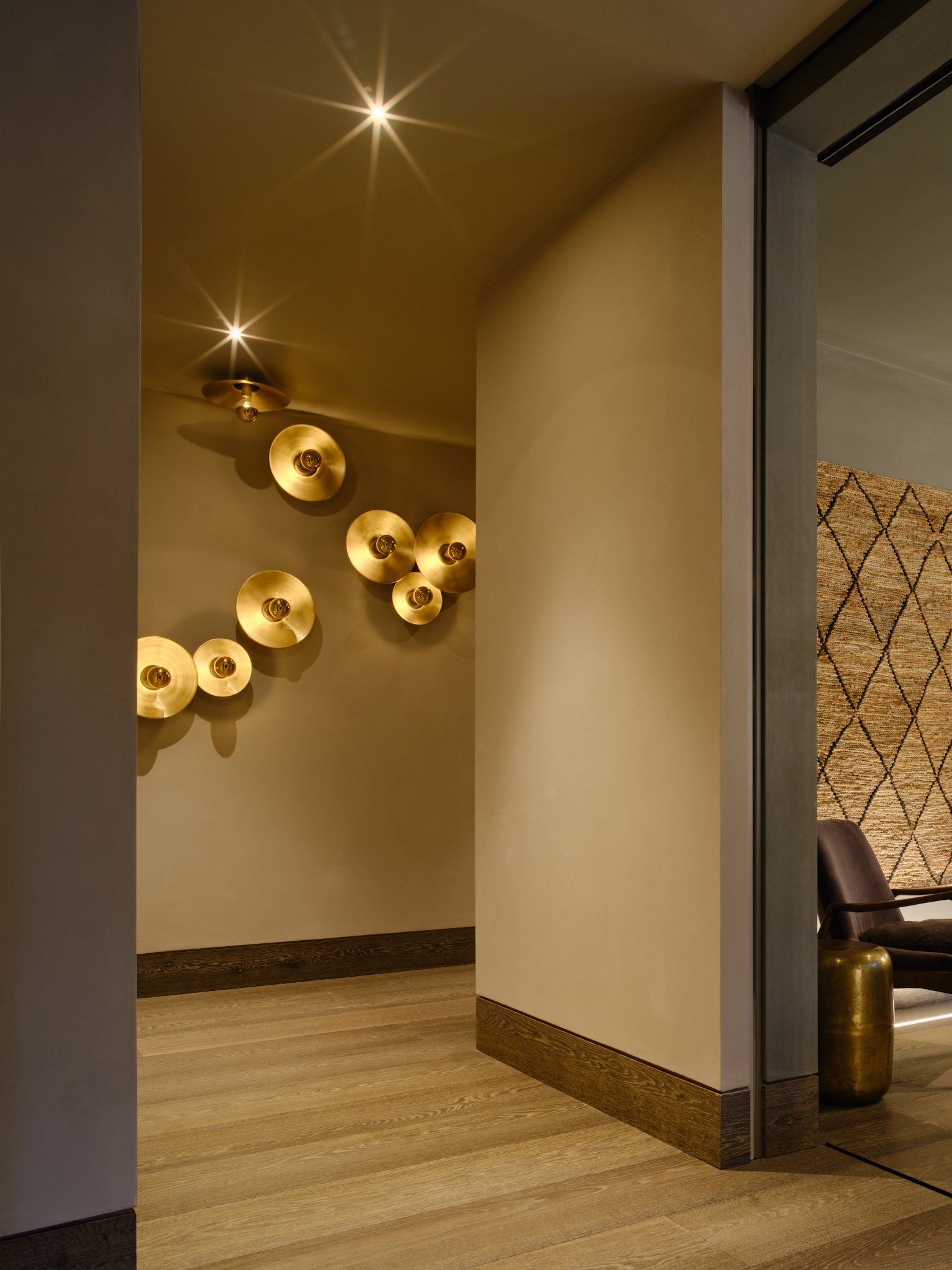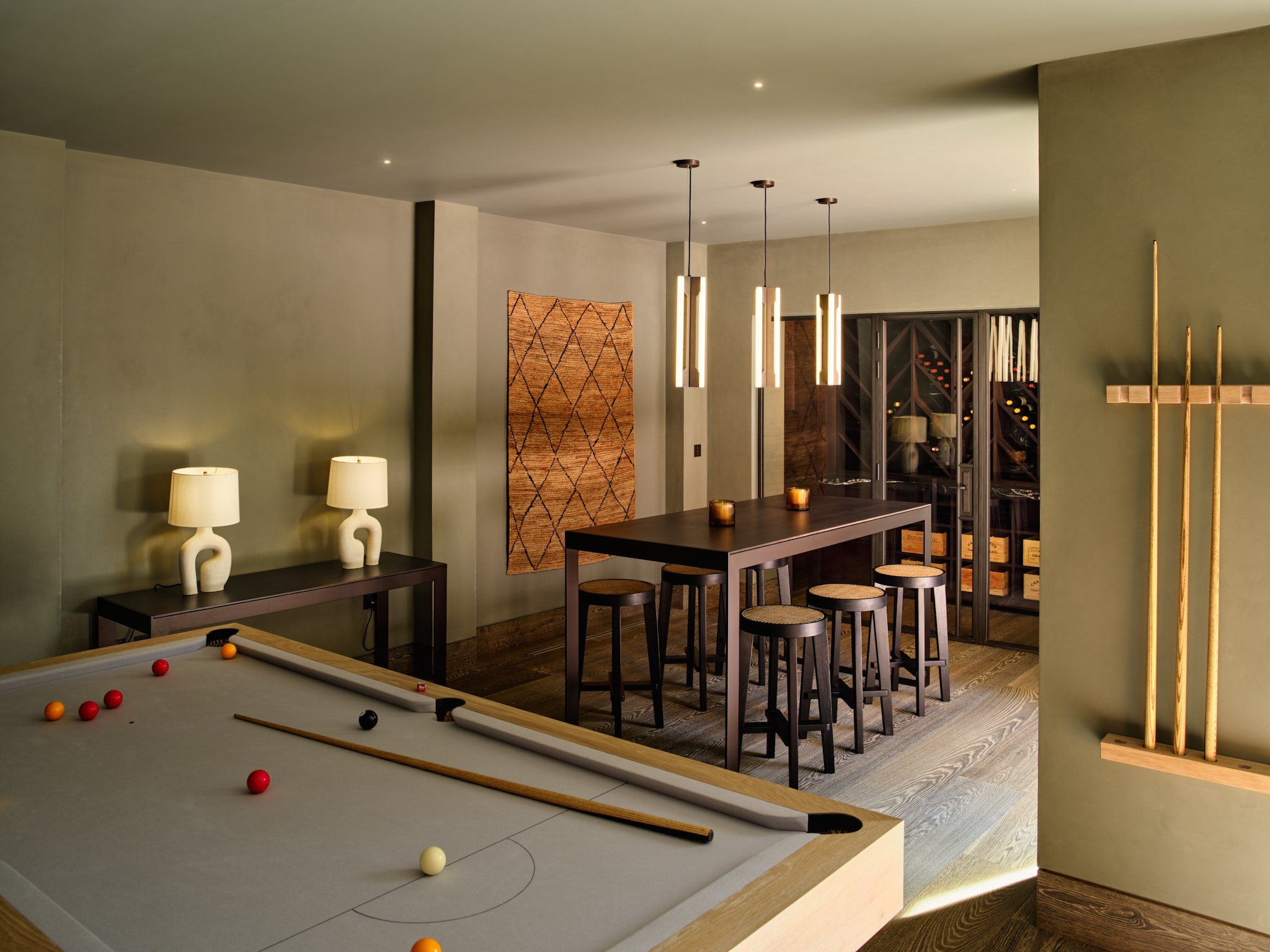
Lighting design & control

Create an extraordinary atmosphere
An intelligent lighting solution creates atmosphere, transforming ordinary rooms into extraordinary spaces. Create ambience with a single button that controls several lighting circuits; have lights slowly turn on at sunset, trigger illuminated pathways and integrate with security systems.















We take a bespoke approach to every intelligent lighting system we design & install
In modern open plan living spaces it’s no longer feasible to have a bank of switches for the potentially dozens of lighting circuits within the space. Even less so if you want to dim them to different levels to create mood based scenes or more striking lighting. With a control system every circuit in the space can be set at varying levels to create discreet scenes for bright, relaxed or task lighting for cooking or reading and all recalled from single engraved buttons that take the guesswork out of setting the perfect scene.
Integration with security systems can further simplify the ability to trigger the desired lighting actions so we can set every light in the house to turn off when you leave the home and set the alarm or just the ground floor and secondary rooms when you go up to bed and part set the system. We can automatically enable the 'vacation mode' which will replay lighting scenes around the home when the alarm is fully set to simulate an occupied house. When you come home and open the front door to hear that familiar beep of the alarm countdown, we disable the vacation mode and illuminate the entrance hall so you don’t have to go to the alarm panel in the dark.
TESTIMONIALS
Bespoke lighting control & design
-

LIGHTING DESIGN
With the advent of modern lighting technology, it is no longer necessary to be limited by the number of switches on a wall or where the circuits are controlled from. Any button on any keypad can control any circuit or combination of circuits, allowing for more creative and varied lighting designs. Rather than the less thoughtful, uniform lines of downlights in a room, creating moods and drama needs more variation in the lighting by combining ceiling spots, wall lights, accent lighting, table and floor lamps and pendants.
Also there is no longer a need to be confined by how many switches can be put on a wall, or where the circuits need to be controlled from. The lighting design can be completely separate from the considerations of how the circuits can be switched on and instead the focus is how the light can transform the room.
-

LIGHTING FIXTURES
There is a big difference between a cheap spotlight that an electrical contractor might pick up from the wholesaler and a well-specified fixture. Factors such as the linearity of the dimming curves, the ability to dim lower and avoiding flicker, as well as just lamp lifespan are all important considerations.
Further to that, modern technologies bring in the ability to adjust colour temperature and control the lights through systems such as the human-centric turnable lighting system Ketra from Lutron. We always aim to start with the fittings and lighting scheme design and work backwards from that to let the fittings define the dimming protocol and control required.
-

LIGHTING CONTROL
We believe that it takes time to perfect the lighting in your home to suit your day-to-day life. Generally we start with three types of lighting in a room: bright, relaxed, and a very low setting. Bright lighting is usually used during the day, relaxed lighting is used from sunset to bedtime, and low lighting is used for pathways when you're up in the middle of the night.
We use conditional programming and an astronomical timeclock on the control system to access accurate sunrise and sunset times for the property that change throughout the year. This allows us to provide a single button press that brings up the lights at the right levels for the given time of day.
-

ADVANCED AUTOMATION
Pathways allow a single press of a button to light a path from the bedroom to the kitchen. If there are several lighting circuits between two rooms, then we can time how long it actually takes to walk between those areas and have the lights illuminate just in front of where you're walking, creating a very dramatic but quite simple effect. Pathways can also be great to give you peace of mind if you want a single button from the kids’ rooms to the parent’s room. We can program the system to automatically turn off certain floors when they are not in use, such as kids' rooms and corridors during weekdays after they have gone to school.
Whole house off buttons can be tailored to the room, so that at the front door it might turn off the entire house and could be pressed as you are leaving. In the lounge you might have a house off button that is pressed when you go to relax in the evening that turns off all lights other than the kids’ nightlights and maybe some low lighting in the communal hallways.
-

LIGHTING KEYPADS
Once you have a lighting design and fixtures, you can look at the positions where you may want to change the lights. Because the number of light circuits in a room no longer dictates how many switch positions you need, you only need keypads in the few convenient positions where you may want to change the lights. There are a variety of styles to match the design of the house and your personal preferences but with all of them we try to stick to a few basic principles.
We use buttons primarily to trigger scenes rather than control circuits. There are some examples such as bedside lamps or perhaps a feature chandelier where it is useful to have one circuit on its own button, but for the most part we aim to have a button that controls a group of lights in a room to create the desired lighting for the given use. This may be a functional bright scene, a relaxed evening scene or for a given task such as cooking or reading. The buttons are then engraved and backlit with your choice of names so you know exactly what every button does - even in in the dark.
-

LIGHTING SECURITY
Automating key features of lighting based on the state of the alarm system is crucial for security. We turn off the whole house, including lights, TV, and music when the alarm is fully set. When in "away mode", certain lights in rooms with windows that can be seen from outside the property turn on in a realistic recreation of if the house was in use. These lights mimic real-life use since they are never at exactly the same times or in the same order. When you come home, the lights in the entrance hall come up, and we turn off the "away mode". If there is an intruder, we can disable all of the keypads and flash all of the internal and external lights until the alarm is disarmed. This can be enough to unsettle an intruder, make them think twice about proceeding and draw the attention of surrounding neighbours. We can set the system so that if you are home and the alarm is triggered after a part set, we don’t flash the upper floors or bedrooms.



